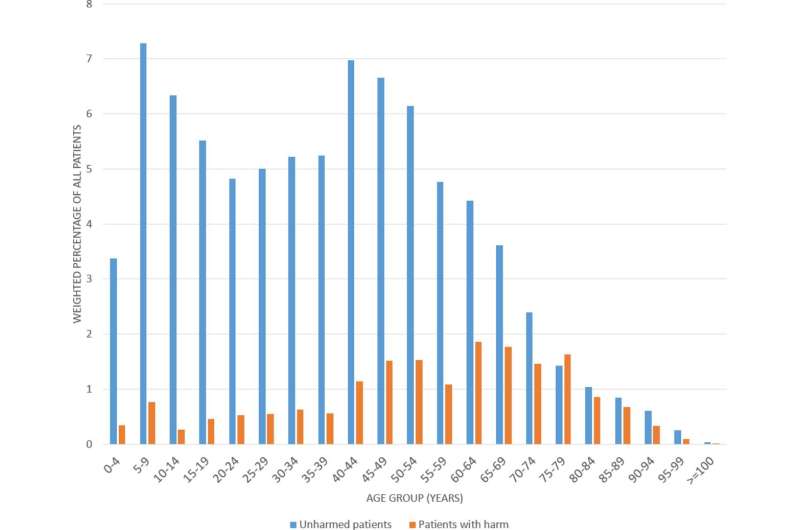
Patient harm is common in New Zealand, but mostly not preventable, a new University of Otago study has found.
The study is understood to be the first to look at the epidemiology of harm—physical emotional or financial negative consequences of care, not attributable to health conditions—affecting patients in New Zealand.
Using all records of 9,076 patients from 2011 until 2013 from 44 general practices, the study identified 2,972 harms affecting 1,505 patients aged 0 to 102.
Most harms (72.4 percent) were minor (such as nausea or patient inconvenience), 22.8 percent were moderate (such as fractures, unplanned pregnancy or poor diabetic control), and 4.4 percent were severe (including myocardial infarction, renal failure and morphine overdose).
Most of the harms (81.6 percent) were considered not preventable, such as getting pregnant despite being on the contraceptive pill or nausea as a side effect from medication.
Eleven patients died, five of whom’s deaths were considered preventable.
Study co-author Dr. Susan Dovey says New Zealanders should feel reassured by the results.
“These results suggest that most of the time, most patients over a random three-year period—all ages, any state of health, whether living in cities or rurally, whether going to large, small, or medium-sized general practices—are going to be helped by the healthcare they receive and not harmed in any noticeable way.
“There’s a bit of a paradox. I think that we should aim to avoid all preventable harms, but I think it is impossible to do that. Healthcare is care for humans, by humans. We wouldn’t want anything else really.
“People do their best to provide the best care, but people are so variable in how they are formed and what they do that responses will vary to even the very best care, sometimes with unexpected harm to patients. I think that needs to be openly acknowledged, even while we strive not to cause harm or be harmed,” she says.
The more serious, preventable harms appeared to arise from hospital care. In one case a 90-year-old man died after falling and hitting his head while a patient in hospital, and in another case, a 68-year-old man died from a myocardial infarction after being prescribed omeprazole when he presented at the emergency department with chest pain.
Notably, this study judged harm from a patient’s perspective. Previously, almost all patient safety studies have taken a medical or nursing perspective.
“I became frustrated at the definitions of patient safety all coming from a medical perspective and focusing on mistakes made by doctors rather than harm experienced by patients,” Dr. Dovey says.
“When patients receive health care, they expect to feel better as a result, they don’t expect to have to deal with nausea, or headaches, or frustration at not receiving the care they need. They don’t necessarily know what normal side effects are, or how to navigate the health system. Maybe they don’t expect to pay for healthcare they need with money they don’t have. These things are considered trivial by most patient safety researchers and not counted as patient safety events.”
Dr. Dovey says the findings of the study are “the best in the world for guiding policy and planning in New Zealand with respect to patient safety.”
Source: Read Full Article


